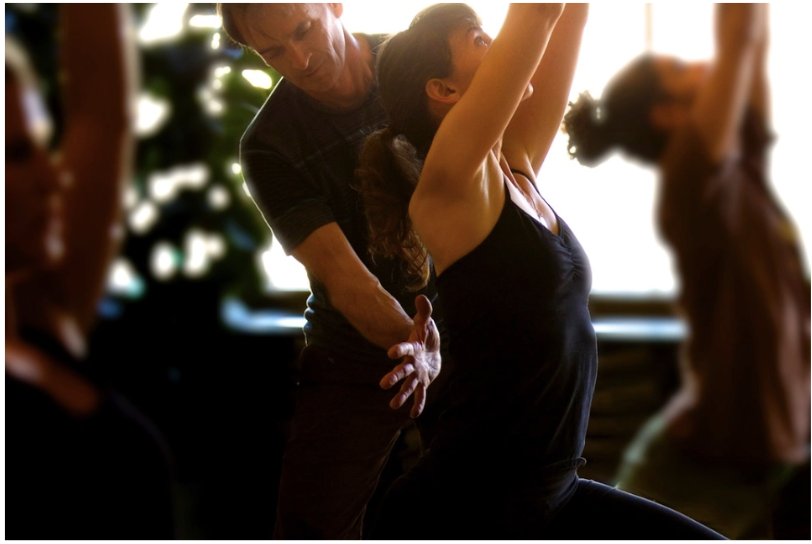Yoga Healing and Guiding Yoga Practices
This four-day Yoga Intensive with Mark Stephens offers in-depth workshops for teachers and serious student on two main topics: using yoga to heal common ailments, and refined methods of guiding asana practices. The Friday night Relax and Restore class and the Saturday Pranaya-Backbends classes are open to all levels of students and teachers. Each session draws from ancient-to-contemporary yoga philosophies, a variety of yoga styles and techniques, and offers a practical application of functional anatomy, biomechanics, and kinesiology.

Thursday
· 2 sessions
o Morning (9:00–12:00)
§ Topic: Yoga Healing – Part I: Theory
· Description: This session focuses on the history, philosophy, principles and techniques of yoga as a healing art and science. We start with the idea of “suffering” as described in ancient-to-modern yoga writings, including the Vedas, Upanishads, Yoga Sutras, and modern writing on Hatha yoga and yoga chikitsa. We also consider the Ayurvedic approach to healing and how it can be integrated into yoga practices that are designed for healing common ailments.
o Afternoon (14:00–18:00)
§ Topic: Yoga Healing – Part II: Musculoskeletal – Lower Body
· Description: Yoga students often come to class with injuries or are injured doing yoga. This session focuses on how to work with students who have common strains and sprains in the feet (plantar fasciitis, collapsed and hypertonic arches), ankles (sprains), shins (splints), knees (ACL, MCL, meniscus), legs (hamstrings, adductors, iliotibial band)and hips (bursitis, femoral neck syndrome, replacements). We will explore a variety of ways to guide students with injuries in these areas both within a class setting and in private sessions focused in individual healing.
Friday
· 3 sessions
o Morning (9:00–12:00)
§ Topic: Yoga Healing – Part III: Musculoskeletal – Upper Body
· Description: Yoga students often come to class with injuries or are injured doing yoga. This sessin focuses on how to work with students who have common strains and sprains in the low back (SI-joint dysfunction, general low back pain, lumbar lordosis, disk degeneration), mid-spine (kyphosis, scoliosis), neck, shoulder girdle (frozen shoulder, impingement syndrome, rotator cuff), elbows (tendenopathy), and wrists (carpal tunnel syndrome).
o Afternoon (14:00–18:00)
§ Topic: Yoga Healing – Part IV: Emotional, Mental, & Behavioral
· Description: This session goes to the heart of yoga by focusing on conditions of the mind, blending insights from traditional yoga and modern sources on mental experience. We will focus on stress, anxiety, dementia, ADHD, substance dependence and abuse, and other conditions.
o Evening (19:30–21:00)
§ Topic: Master Class: Balanced Pranayama & Heart Opening Backbends
· Description: This Master Class begins with exploration of the breath, introducing natural breathing, ujjayi, viloma, sama/visama vrtti, kumbhaka, and kapalabhati pranayama techniques. We then move into a balanced Vinyasa Flow asana practice designed to guide students deeply into a series of heart-opening backbends, followed by asanas to help integrate and balance energy on the path to Savasana.
Saturday
· 3 sessions
o Morning (9:00–12:00)
§ Topic: The Art & Science of Guiding Yoga Practices – Part I: Philosophy, Principles, Techniques – Applied to Standing Asanas
· Description: This Yoga Teacher Intensive focuses on how to best give refined guidance to students, with a primary focus on giving effective hands-on adjustments accompanied by related verbal cues and demonstrations. This first session starts with theory and principles and then applies these insights to Standing Asanas. We will explore a wide range of externally- and internally-rotated hip standing asanas, including modifications, variations, and uses of props for each asana.
o Afternoon (14:00–18:00)
§ Topic: The Art & Science of Guiding Yoga Practices – Part II: Deeper Exploration of Standing Asanas
· Description: In Part II of the Yoga Teacher Intensive, we continue with the practical applications we started in Part I, focusing on the refined teaching of a wide variety of Standing Asanas and how best to guide them in flow-style and individualized classes that help integrate and balance energy on the path to Savasana.
o Evening (19:30-21:00)
§ The Philosophy of Modern Yoga
· Description: Lecture and discussion of yoga history and philosophy, including a survey of yoga from ancient to modern times. Focus is on keeping yoga philosophy alive in daily practice and teaching.
Sunday
· 2 sessions
o Morning (9:00–12:00)
§ Topic: The Art & Science of Guiding Yoga Practices – Part III: Backbends & Seated Twists
· Description: In Part III, first we explore guiding students in each type of Backbending Asana – Contraction, Traction, and Leveraged– including Salabhasana ABC, Bhujanghansana, Urdhva Mukha Svanasana, Dhanurasana, Unstrasana, Kapotasana, Setu Bandha Sarvanghasana, Urdhva Dhanurasana and Eka Pada Raj Kapotasana. We will focus on hands-on guidance and adjustments, use of props, and modifications that make the asanas more safe, accessible, and deeper.
o Afternoon (14:00–18:00)
§ Topic: The Art & Science of Guiding Yoga Practices – Part IV: Forward Bends, Hip Openers, Inversions
· Description: In Part IV, we explore Seated and Supine Forward Bends and Hips Openers, plus Inversions.
